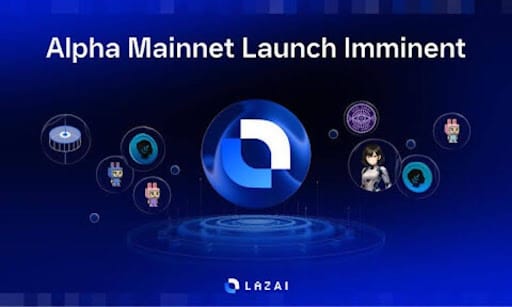Analyzing XRP Blockchain Ledger Data for Insights into User Activity
The XRP ledger powers the XRP cryptocurrency and provides an open-source decentralized platform for money transfers. Analyzing the data on the XRP blockchain ledger can provide valuable insights into the activities of users on the network. This information can help inform decisions around development, investment, and regulation in the XRP ecosystem.
What Kind of Data is Available in the XRP Ledger?
The XRP ledger records all transactions made between accounts on the network. This includes information like:
- Amounts transferred
- Transaction fees
- Timestamps
- Originating and destination accounts
- Memos attached to transactions
In addition to transactions, the ledger also stores information about accounts like their XRP balances and settings. Some other data available includes:
- New accounts created
- Account properties like sequence numbers
- Changes made to account settings
- Order books for decentralized exchange offers
- Issued currencies and trusts between accounts
All this data is recorded on the distributed ledger that is updated whenever a new validated transaction batch or "ledger version" is confirmed.
How to Access and Analyze the Ledger Data
The XRP ledger data is open and accessible to anyone. There are a few ways to retrieve and analyze the information:
- Use the XRP Ledger API - This provides structured access to data from the ledger including transactions, balances, and order books. Applications can be built to gather and parse this data.
- Run an XRP validator node - Running your own validator gives you a full copy of the ledger and new data as it is validated. This can be queried directly.
- Use reporting tools - There are online tools like the XRP Scan Explorer that structure and visualize data from the ledger. This can be used to easily view stats.
- Export ledger versions - New ledger versions can be exported as JSON files to parse and analyze in your own applications. This allows bulk processing of historical ledger data.
Once you have access to the ledger data, you can start aggregating and analyzing it using database and data analytics platforms. Exploring the data over different time frames can provide insights.
User Transaction Behavior Analysis
Analyzing transaction data on the XRP ledger can provide a window into how users are transferring funds on the network. Some ways this data could be analyzed include:
- Finding the busiest corridors for transfers like USD to Mexican Pesos
- Detecting patterns in transaction sizes to see common transfer amounts
- Looking at transaction frequency by account to identify active users
- Linking accounts in transaction paths to mapcross-border payments
- Looking for seasonal variations in activity over months or days
This can identify trends in XRP usage and how funds flow globally through the network.
Account Lifecycle Analysis
The creation and evolution of accounts on the XRP ledger can also provide valuable data points. Analysis could include:
- Identifying the rate of new account creation over time
- Looking at account balances to see how accounts accumulate value
- Analyzing flags like
RequireDestinationTagto see usage patterns - Detecting common account setting configurations
- Identifying inactive "cold storage" accounts versus active accounts
This provides insight into how user needs and behaviors shape the network over time.
Opportunities for Further Analysis
The open data provided by the XRP ledger enables all types of analysis limited only by imagination and skill. Some potential opportunities include:
- Anomaly detection for suspicious transactions
- Sentiment analysis of transaction memos
- Predictive analytics using historical data
- Correlating activity with external events like market fluctuations
There is so much data available that the possibilities are endless for unlocking new insights through analysis.
"As an analyst exploring the XRP ledger data, I feel like an adventurer exploring a deep cavern filled with treasure. Each piece of data is a clue that brings me closer to understanding this fascinating ecosystem."
Key Strategies for Effective Analysis
To get the most out of analyzing XRP ledger data, some key strategies are recommended:
- Know your goals and target metrics before diving in
- Use the right tools for efficiently aggregating and processing data
- Continuously evaluate data quality and relevance
- Leverage visualizations to identify patterns and outliers
- Correlate ledger data with other data sources
- Automate analysis tasks for continuous monitoring over time
- Let findings guide strategic decisions and new directions for analysis
Following these tips will lead to higher quality analysis and actionable business insights.
Conclusion
What are the limitations of analyzing XRP blockchain data?
While the public XRP ledger provides transparent data, there are some limitations to keep in mind when analyzing:
- Accounts are pseudonymous, so linking real-world identities is difficult
- Understanding context around transactions requires external data sources
- Data quality depends on what users submit to the ledger
- Auditability of some historical data may be reduced over time
- Advanced analytics requires significant data science skills and resources
Despite these limitations, blockchain analysis provides unique insights not available through other means. Analysts just need to be aware of the challenges in extracting accurate, meaningful conclusions from the data.
What future trends can analysis reveal about the XRP ledger?
Looking forward, continuous analysis of the XRP ledger can identify macro trends and make predictions about the future evolution of the network including:
- Increasing transaction volumes as adoption spreads to new corridors
- Changing patterns and seasonality in remittances
- Emergence of new use cases beyond payments
- Increasing interoperability with other chains
- Effects of protocol changes over time
- Correlations with regulatory regime changes across jurisdictions
With so much rich data available, analysts are bound to unlock new insights that will shape strategies across the ecosystem. The future looks bright for blockchain analytics!




